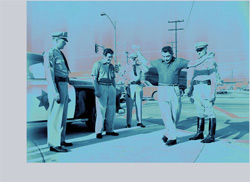 by: Will Bruzzo
by: Will Bruzzo
No matter the time of year, it is valuable to consider the effects of drinking and driving and how you can avoid an arrest or causing an accident. My experience comes from 15 years of legal representation.
Even though the legal limit in California and many other states is a 0.08 blood-alcohol level, most forensic toxicologists (folks who study the effect of alcohol on the body) will say that alcohol really starts to affect people at the 0.05 blood-alcohol level. Almost half of the legal limit! Under California law, even if you are under the 0.08 level, you can still be prosecuted for driving under the influence if it can be shown that alcohol in your system impaired your driving. Some people can suffer physical impairment from alcohol at levels lower than other people. While it is important to know your limits it is more important to count the number of drinks you have ingested over a particular time frame so nothing is left to chance. What follows is a general guide for deciding whether or not you should drive based on your weight, number of drinks, and amount of time passed.
First we have to start with ground rules: (1) a 12 ounce beer, a shot (normal size) and a 4 ounce glass of wine all have the same amount of alcohol and will affect you almost entirely the same; (2) every hour your body will burn off the equivalent of the alcohol in a 12 ounce beer, a shot or a 4 ounce glass of wine through the natural metabolism process of the body. That is, your body will naturally eliminate one of each of those amounts of alcohol about every hour. We get drunk when we drink in excess of what our body can eliminate in a given time frame.
The best way to illustrate how much we can drink is to use examples. Remember, these are approximations but they give a pretty good idea of intoxication levels:
1 First subject: 110 lbs person (man or woman does not matter) drinks two 12 ounce beers starting at 7:00 p.m. and finishes both beers at 7:45 p.m. What is the personís blood alcohol level at 8:00 p.m.? If you weigh around 110 lbs every alcoholic beverage you ingest will peak at a blood alcohol level of about 0.03 when the beverage is fully absorbed and before it is eliminated. So by 8:00 p.m. that first beer will have been fully absorbed and eliminated from the body, which will leave one beer still in the system and thus the person will have a blood alcohol level of about 0.03.
2 Second subject: 190 lbs. person drinks three 12 ounce beers starting at 7:00 pm and finishes the third beer at 7:45 p.m. What is the personís blood alcohol level at 8:00 pm? If you weigh 190 lbs one twelve ounce beer will raise your blood alcohol about 0.02. So by 8:00 p.m. one of the beers will have been eliminated which means there are still two beers in the system. This means the individualís blood alcohol level will be approximately between a 0.04 to a 0.05. Even though this is still below the aforementioned limit, many forensic toxicologists will say that driving may be impaired at 0.05.
The elimination of alcohol varies from person to person so the rate for one person may differ slightly from the rate of another. Also, if you are unsure of how many drinks you have had, then waiting an hour before driving will eliminate one drink. Be safe out there!
Share
|
|

